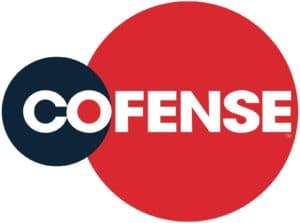The pressure is on. You have to manage company and vendor purchase obligations while working with information and procedures across departments so you can comply with agreements.
If you mismanage a contractual obligation, you can hinder your organization’s workflow at best and face legal action at worst. Thankfully, there are ways to streamline and secure your purchase obligation management.
What are contractual obligations or purchase obligations?
Purchase obligations are an agreement to purchase goods or services that is enforceable and legally binding. The agreement specifies all significant terms, including:
- fixed or minimum quantities to be purchased
- fixed, minimum, or variable price provisions
- approximate timing of the transaction
These agreements can apply to your institution or a vendor’s. For example, your sales contract could specify that your company must deliver 1,000 units for a fixed price within the calendar year. Or, your institution agrees to pay a software company a variable rate based on usage for a 12-month contract.
How to mitigate 3 contractual obligation challenges
Coordinating and managing obligation details between the sales, legal, and procurement team is relatively straightforward for a single deal. However, as obligations increase in variety and size, keeping track of details to uphold obligations becomes complicated.
We reached out to procurement professionals to learn about their experience with obligation management and found three common challenges.
Reduce inaccuracies with an automated workflow
The setup of each vendor obligation comes with a barrage of conversations. Details, offers, negotiations, documents, and deadlines can easily get lost in the shuffle, even in the smoothest of deals. As Tyler Hutchinson, founder of Energy Powder World, points out, procurement is subject to roadblocks:
“Procurement does not always go the way we want it to, even if we have contracts. When it comes to contractual obligations, you can always talk it out to whoever you transact with if there are minor challenges. If there is a lack of communication, the more reasons these problems will arise, which is why constant communication is key.”
Working through an issue can be as simple as talking to a vendor, but communication can quickly get unmanageable if you multiply that by tens or hundreds of deals. Before Cofense adopted a contract management tool, all communication went through email. Heather Quinn, a contracts administrator at Cofense, recalls that:

In terms of contract risk management, there were also risks for inaccuracy, like wrong versions of contracts. Another key problem was it was easy for email to get missed, and that could be a huge deal. At the end of a quarter, every minute counts.”
Try an automated workflow instead of moving procurement along and tracking documents in your inbox. Creating a repeatable process speeds up communication and keeps all relevant information together without taking time to move signing and enforcement along manually. Automation strikes a balance between efficiency, communication, and accuracy to smooth out your contract management lifecycle.
Simplify collaboration with a centralized editor
Managing purchase obligations is a team sport. You’ll need to collaborate with other procurement team members and vendors to track and enforce agreements. Depending on your organization’s structure, you might also split some responsibilities with other departments. For example, if the legal team holds vendors to their obligations while procurement worries about meeting their own.
In addition to this cross-team collaboration, you have to manage updates that pop up after the initial agreement is signed.
Kelly Barner, the owner of Buyers Meeting Point, LLC. and host of the Dial P or Procurement podcast, notes that,

If everyone has access to the information they need, they’re empowered to uphold their part of the workflow. A documented set of roles and expectations to ensure no obligations fall through the cracks and a standard operating procedure can help. A shared contract editor also gives teams a place to make changes while democratizing access to the same up-to-date documents.
Create a repository to keep tabs on vendor fulfillment and easily reference agreements
When we asked procurement professionals about the challenges of contractual obligations, the most common response was tracking and reviewing details for compliance. Max Benz, the founder and CEO at BankingGeek, notes that:

Lisa Dietrich, the co-founder of RemoteCanteen, echoes some of the same challenges of organizing details.

To alleviate some of this pressure to stay on top of obligations, you need a dynamic contract repository. A repository is a step up from a contract database spreadsheet since it allows easily referenced contract details, filtering, and custom views. For example, you could create a custom view for each quarter’s auto-renewals to review systematically without searching through a spreadsheet.
When you have a repository that automatically updates with signed vendor agreements, you can have total trust that you have every detail at your fingertips. Adding extra information through integrations adds context that can help every procurement team member, whether they worked on the deal or not.
Create a seamless contractual obligation process
Your procurement team manages too much to track obligations manually. Ironclad is a contract lifecycle management platform that empowers procurement teams to do what they do best by creating an automated and intelligent purchase obligation workflow. You can leave behind bloated inboxes and incomplete spreadsheets in exchange for a system you can trust.
Learn more about how Ironclad can help procurement teams here.
Ironclad is not a law firm, and this post does not constitute or contain legal advice. To evaluate the accuracy, sufficiency, or reliability of the ideas and guidance reflected here, or the applicability of these materials to your business, you should consult with a licensed attorney. Use of and access to any of the resources contained within Ironclad’s site do not create an attorney-client relationship between the user and Ironclad.
- What are contractual obligations or purchase obligations?
- How to mitigate 3 contractual obligation challenges
- Create a seamless contractual obligation process
Want more content like this? Sign up for our monthly newsletter.




